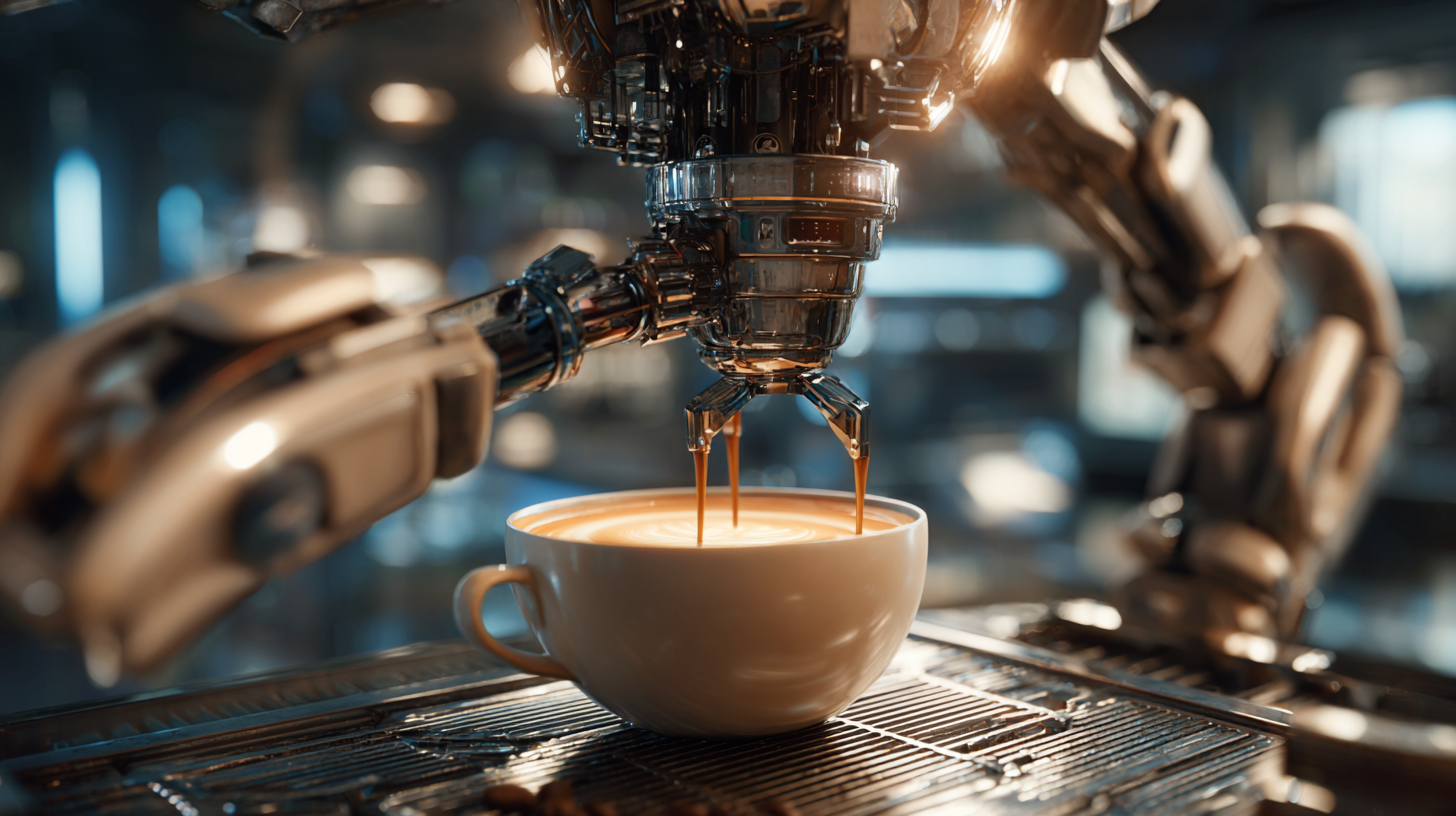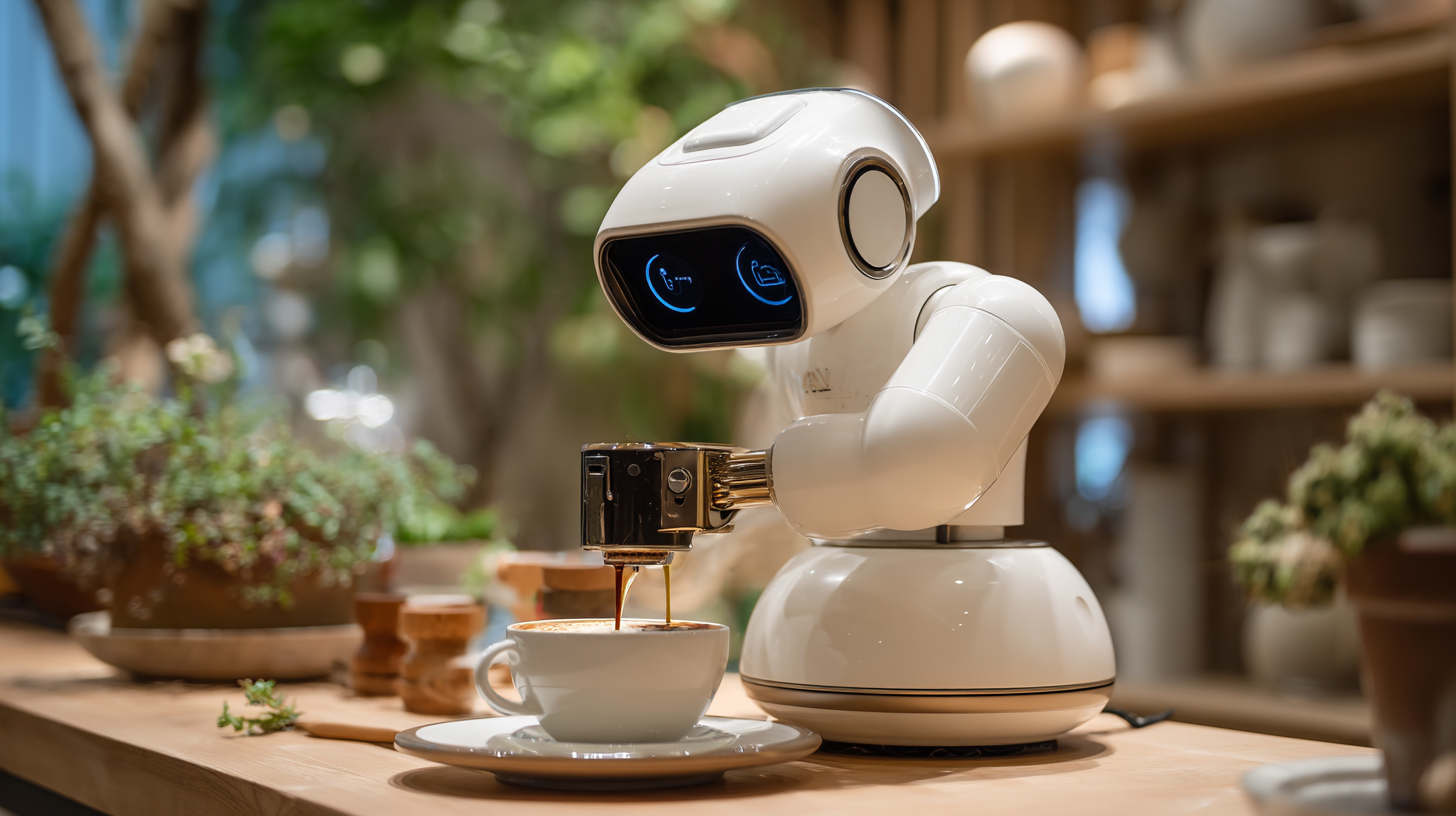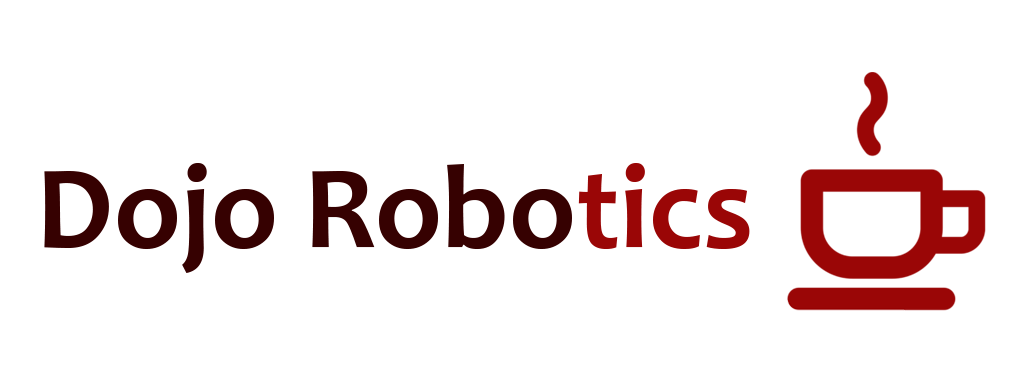Navigating the Best Latte Robot Trends of 2025 for Global Procurement Success
As the coffee industry continues to evolve, the rise of automation is becoming increasingly significant, with the "Latte Robot" emerging as a pivotal player in this transformation. According to a recent report by the International Coffee Organization, global coffee consumption is expected to exceed 200 million 60-kilogram bags by 2025, presenting a vast opportunity for innovative coffee solutions. The integration of Latte Robots into cafes and restaurants is not just a trend; it represents a strategic shift towards efficiency and consistency in beverage preparation. Industry leaders are turning to technology to meet the demands of discerning consumers, who seek personalized and convenient coffee experiences. This blog will explore the latest Latte Robot trends anticipated for 2025, offering a comprehensive checklist for global procurement success, ensuring businesses can navigate this rapidly changing landscape effectively.

Current Trends in Latte Robotics: Key Data Insights for 2025
In 2025, the landscape of latte robotics is poised for transformative advancements that promise to enhance global procurement processes. Current trends indicate a shift towards automation solutions that not only streamline production but also cater to personalized customer experiences. As businesses seek to optimize operations, the integration of machine learning and artificial intelligence into latte robots enables them to analyze customer preferences and adjust recipes in real-time. This adaptability is a game-changer, allowing for a diverse range of flavors and styles that resonate with consumers' evolving tastes.

Moreover, sustainability has emerged as a key focus within the latte robotics sector. With a growing emphasis on eco-friendly practices, manufacturers are developing machines that use less energy and incorporate biodegradable materials. This trend aligns with broad consumer demands for greener options, pushing companies to invest in technology that prioritizes environmental stewardship. Additionally, data analytics plays a crucial role, providing insights into market trends and consumer behavior, which are essential for making informed procurement decisions in a competitive landscape. As we look ahead to 2025, the collaborative synergy of innovation, sustainability, and data-driven strategies will redefine the art of latte-making, positioning businesses for success.
Standards and Compliance in Latte Robot Manufacturing: A Global Overview
As the demand for latte robots surges globally, understanding the standards and compliance in their manufacturing becomes paramount for procurement professionals. In 2025, manufacturers are expected to adhere to more robust regulations, ensuring that these machines not only deliver consistency in beverage quality but also meet safety and environmental benchmarks.
Compliance with international standards such as ISO 9001 for quality management and ISO 14001 for environmental management will be crucial. This adherence fosters trust among consumers and ensures that manufacturers stand out in a competitive market.
Additionally, navigating the complex landscape of compliance is essential for successful global procurement. Countries have varying regulations regarding machine safety, energy efficiency, and materials used in production. For instance, the European Union's machinery directives and the North American standards present different challenges that procurement teams must carefully consider. Understanding these frameworks will not only minimize risks associated with compliance failures but also enhance the overall reliability of the latte robots sourced from global suppliers. Engaging with suppliers who are proactive in meeting these standards will create a pathway to sustained success in the evolving latte robot industry.
Cost-Effectiveness of Latte Robots: Analyzing ROI for Procurement Decisions
As procurement teams evaluate the latest trends in latte robots for 2025, understanding the cost-effectiveness and return on investment (ROI) of these machines becomes paramount. Latte robots not only streamline coffee preparation but also significantly reduce labor costs. By automating the brewing process, businesses can allocate their human resources to other essential tasks, ultimately enhancing productivity.

Analyzing the ROI of latte robots involves assessing both direct and indirect savings. Directly, the reduction in labor costs can lead to significant financial benefits. Moreover, latte robots ensure consistency in beverage quality, leading to increased customer satisfaction and loyalty. Indirectly, organizations benefit from reduced wastage and energy efficiency, contributing to a more sustainable operation. By focusing on these factors, procurement decisions can be better informed, ensuring that investments in latte robots yield substantial long-term benefits.
Innovative Technologies Shaping the Future of Latte Automation
As we look ahead to 2025, the landscape of latte automation is being significantly shaped by innovative technologies that promise to redefine the coffee experience. A recent report by Grand View Research highlights that the global coffee machine market is expected to reach USD 4.8 billion by 2025, with a substantial portion driven by automated solutions. This rise in demand reflects consumers’ growing preference for convenience and quality, pushing manufacturers to explore advancements in robotics and artificial intelligence for their coffee production processes.
One standout trend is the integration of machine learning algorithms that enhance the brewing process by ensuring precision and consistency in flavor profiles. According to a study by Zion Market Research, the demand for automated coffee machines is anticipated to grow at a CAGR of 10.5% from 2022 to 2030. These machines utilize data analytics to adjust brewing parameters dynamically, optimizing the extraction process based on real-time feedback. Furthermore, advancements in IoT enable remote monitoring and operation, allowing cafes to maintain quality control across multiple locations seamlessly. This blend of technology not only streamlines operations but also elevates consumers’ experiences with bespoke lattes crafted to perfection.
Navigating the Best Latte Robot Trends of 2025 for Global Procurement Success - Innovative Technologies Shaping the Future of Latte Automation
| Trend | Description | Projected Growth (%) | Key Benefits |
|---|---|---|---|
| AI-Powered Customization | Robots using AI to personalize beverage details based on customer preferences. | 25% | Enhanced customer satisfaction, increased sales. |
| Sustainability Features | Integration of eco-friendly technologies and recyclable materials in production. | 30% | Reduced environmental impact, appeal to eco-conscious consumers. |
| Mobile Integration | Apps allowing users to order and customize their drinks remotely. | 40% | Convenience, increased order volume. |
| Multifunctionality | Robots designed to perform multiple tasks beyond coffee making. | 20% | Space-saving, cost-effective for businesses. |
| Health Monitoring Features | Use of sensors to provide nutritional information and dietary recommendations. | 15% | Personalized health experiences, enhanced customer loyalty. |
Sustainable Practices in Latte Robot Production: Industry Best Standards
As the latte robot industry progresses, sustainable practices in production are becoming increasingly crucial. Adopting eco-friendly materials and processes is not just a trend but a necessity for manufacturers aiming to create a positive impact while meeting consumer demand. Leading companies are embracing innovative technologies that minimize waste and energy consumption, setting an industry standard for responsible production.
When looking to procure the latest latte robots, consider these tips: prioritize suppliers who demonstrate a commitment to sustainability through their sourcing practices and production methods. Additionally, ask about their environmental certifications to ensure they align with global standards.
In 2025, the emphasis on sustainable practices will continue to grow, influencing not only the production of latte robots but also the overall approach to food processing. Stay ahead in the procurement game by engaging with startups that are pioneering sustainability in the food tech landscape. Their innovative solutions will not only enhance your operational efficiency but also support a greener future for the industry.
